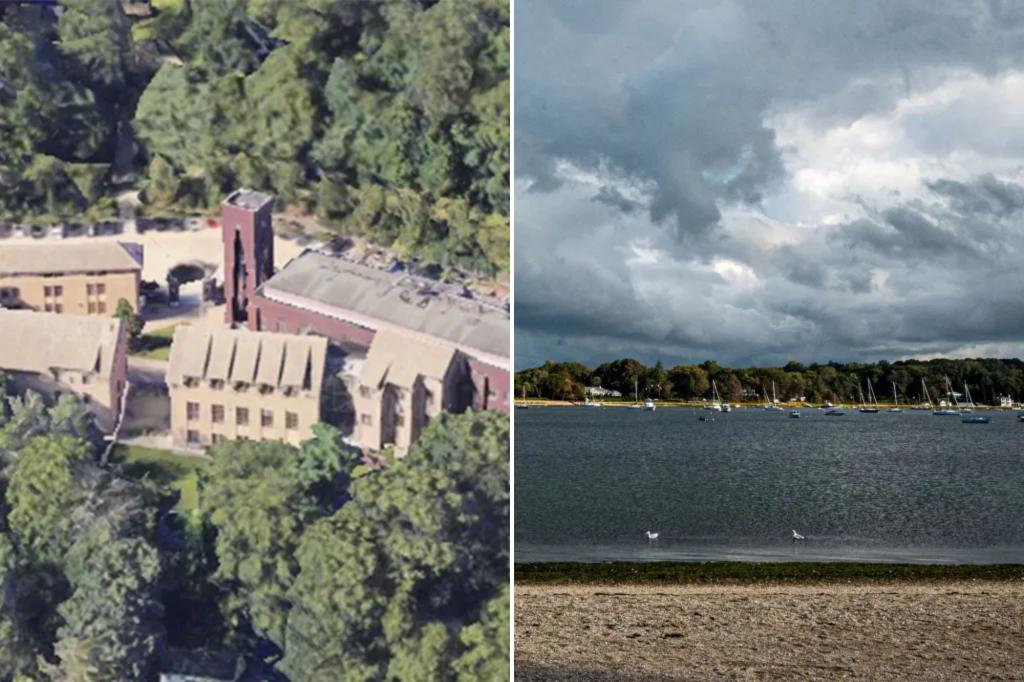The idyllic tranquility of Oyster Bay Cove, a prestigious enclave on Long Island’s North Shore, is facing a potential disruption. Residents of this exclusive community, known for its affluent residents, including celebrities and billionaires, are vehemently opposing a proposed development project by Cold Spring Harbor Laboratory. The plan involves converting an existing 11-acre property on Sandy Hill Road into a 28-unit housing complex for post-doctoral students. This proposal has ignited a fierce debate within the village, pitting the laboratory’s need for housing against the residents’ concerns about preserving the community’s character and exclusivity.
The heart of the residents’ opposition lies in the perceived incompatibility of a multi-family housing complex with the established single-family residential nature of Oyster Bay Cove. The group “Save Oyster Bay Cove” is spearheading the resistance, arguing that the influx of new residents will irrevocably alter the village’s character. They express concerns about increased traffic congestion on the narrow, winding roads, potential strain on local infrastructure, and the impact on the exclusive ambiance that attracts high-profile residents. The group contends that the project would transform Oyster Bay Cove from a secluded haven into a more densely populated area, diminishing its appeal for those seeking privacy and tranquility. Furthermore, they fear the potential for overcrowding in local schools should the post-doctoral students have families.
Mayor Charles Goulding defends the project, emphasizing its limited scope and its alignment with the property’s historical use. He highlights that the development will utilize existing buildings on the site, formerly a residential school for girls, without increasing their size or height. Goulding portrays the project as a continuation of the property’s historical function, simply transitioning from housing 28 girls to accommodating 28 PhD students. He argues that this adaptive reuse preserves the architectural significance of the buildings while fulfilling a practical need. The mayor also underscores the potential benefits of having bright young minds contributing to the local community.
The residents, however, remain unconvinced. They view the post-doctoral students as transient residents, unlike the long-term homeowners who make up the fabric of Oyster Bay Cove. They argue that this temporary nature of the student housing diminishes the investment these residents will have in the community. The residents also fear the potential for increased noise and activity with the arrival of a larger group of residents. They question whether adequate consideration has been given to the potential long-term impacts on the community’s infrastructure and resources.
The crux of the debate revolves around the definition of community and the balance between preserving its existing character and accommodating future needs. Residents of Oyster Bay Cove value their exclusivity and the tranquility it affords. They fear that the influx of new residents, even highly educated ones, will erode the very qualities that make their community special. On the other hand, Cold Spring Harbor Laboratory emphasizes the importance of providing suitable housing for its researchers, arguing that it contributes to the scientific advancements that benefit society as a whole. They present the project as a responsible use of existing infrastructure that minimizes environmental impact.
The ongoing dispute highlights the complex challenges faced by communities when balancing development with preservation. The residents of Oyster Bay Cove are fighting to maintain the character of their village, fearing that change will diminish their quality of life. Cold Spring Harbor Laboratory, on the other hand, seeks to address the practical needs of its researchers while respecting the historical significance of the property. This conflict underscores the delicate balance between respecting established community norms and embracing progress and change. The ultimate decision will likely rest with the local zoning board, which must weigh the competing interests and determine the best course of action for the future of Oyster Bay Cove. Their decision will set a precedent for how the community addresses future development proposals and how it defines its identity in the years to come.
The upcoming zoning board meeting will be a critical juncture in this debate. The board will have to consider the arguments of both sides, assess the potential impacts of the proposed development, and decide whether it aligns with the long-term vision for Oyster Bay Cove. The residents’ concerns about traffic, infrastructure, and the potential disruption to their community’s character will need to be carefully weighed against the laboratory’s need for housing and the potential benefits of attracting bright young scientists to the area. This decision will not only determine the fate of the proposed housing complex but also shape the future character of Oyster Bay Cove. It will be a test of how the community navigates the tension between preserving its exclusivity and embracing the inevitable changes that come with growth and development. The outcome will have long-lasting consequences for the community and will likely influence future development decisions.










